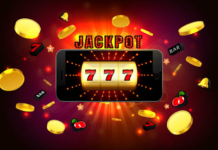Have you ever been fascinated by the beautiful and intricate characters of the Korean alphabet? Also known as Hangul, the Korean writing system is a unique and phonetic script that was created in the 15th century under the reign of King Sejong the Great. Today, Hangul is celebrated for its scientific design and ease of learning, making it a popular choice for language enthusiasts and learners around the world.
In this comprehensive guide, we will delve into the Korean alphabet from A to Z, exploring its history, structure, pronunciation, and usage. Whether you are a beginner eager to start your Hangul journey or a language aficionado looking to deepen your understanding, this article will provide you with all the essential information you need to know about the Korean alphabet.
History of Hangul
The creation of Hangul is a remarkable tale of innovation and cultural pride. Prior to Hangul, the Korean language was primarily written using Classical Chinese characters, which posed significant challenges for the majority of the population who were illiterate. In an effort to promote literacy among the common people, King Sejong the Great initiated the development of a new writing system that would be easy to learn and accessible to all.
Under the guidance of the renowned scholars, including Jeong Inji and Choi Sejin, Hangul was introduced to the public in 1446. The alphabet was designed to reflect the shape of the articulatory organs when pronouncing the sounds, making it intuitive and logical. With just 24 letters encompassing 14 consonants and 10 vowels, Hangul was a groundbreaking invention that revolutionized literacy in Korea.
Structure of Hangul
One of the key characteristics of Hangul is its systematic structure and phonetic nature. Each Hangul character, known as “jamo,” is composed of strokes that represent individual sounds. Consonants are depicted by vertical or horizontal lines, while vowels are typically depicted by circles or vertical lines with additional strokes.
-
Consonants: The 14 consonants in Hangul are ㄱ (g/k), ㄴ (n), ㄷ (d/t), ㄹ (r/l), ㅁ (m), ㅂ (b/p), ㅅ (s), ㅇ (ng), ㅈ (j), ㅊ (ch), ㅋ (k), ㅌ (t), ㅍ (p), and ㅎ (h).
-
Vowels: The 10 basic vowels in Hangul are ㅏ (a), ㅓ (eo), ㅗ (o), ㅜ (u), ㅡ (eu), ㅣ (i), ㅐ (ae), ㅔ (e), ㅚ (oe), and ㅢ (ui).
By combining consonants and vowels in various ways, it is possible to create syllable blocks that form words in Korean. Unlike many other writing systems, Hangul is written in blocks that represent syllables as a whole, rather than individual letters.
Pronunciation of Hangul
Mastering the pronunciation of Hangul is essential for effective communication in Korean. While some sounds may be challenging for non-native speakers, understanding the basic principles of pronunciation can significantly aid in language acquisition.
-
Double Consonants: In Hangul, there are double consonants known as “tensed” consonants, which are pronounced with a stronger emphasis. For example, ㄲ is pronounced like a double “k” sound, similar to the English word “book.”
-
Double Vowels: Similarly, there are double vowels in Hangul that are elongated when pronounced. For instance, ㅔ is pronounced like the “e” in “bed,” while ㅖ is pronounced with a longer “e” sound.
-
Diphthongs: Hangul includes diphthongs, which are combinations of vowel sounds within a single syllable. Examples of diphthongs in Korean include ㅘ (wae), ㅝ (wo), and ㅚ (oe).
Practicing pronunciation through listening to native speakers and engaging in conversations can help improve your spoken Korean skills and fluency. Additionally, resources such as language apps, online courses, and language exchange programs can provide valuable support in mastering Hangul pronunciation.
Usage of Hangul
The versatility of Hangul extends beyond its use in the Korean language. While it is predominantly employed for writing Korean, Hangul has also found applications in creative mediums and international contexts.
-
Art and Design: The aesthetics of Hangul characters have inspired artists, designers, and calligraphers around the world. The fluid strokes and harmonious composition of Hangul make it a visually appealing script that is often incorporated into artwork, logos, and cultural displays.
-
Pop Culture: With the global popularity of Korean pop culture, including K-pop music, K-dramas, and Korean cuisine, the exposure to Hangul has increased significantly. Many fans of Korean entertainment engage with Hangul through song lyrics, subtitles, and social media content.
-
Education: As interest in learning Korean grows worldwide, Hangul has become a focal point for language learners. Korean language courses, textbooks, and online resources often prioritize teaching Hangul as the foundation for mastering the language.
Furthermore, the inclusion of Hangul in Unicode has facilitated its digital representation on computers, smartphones, and other electronic devices, ensuring its accessibility and usability in the digital age.
FAQs about Hangul
1. Why is Hangul considered one of the most scientific writing systems in the world?
Hangul is lauded for its logical and systematic design, with each character representing distinct phonetic sounds. The structure of Hangul reflects the principles of phonetics and articulatory phonology, making it highly intuitive and easy to learn.
2. How long does it take to learn Hangul for beginners?
Many learners can grasp the basics of Hangul within a few hours of dedicated study. With regular practice and exposure to the script, beginners can become proficient in reading and writing Hangul in a matter of weeks.
3. Are there any resources available for practicing Hangul online?
Numerous websites, apps, and online courses offer interactive lessons, exercises, and quizzes for learning Hangul. Websites like Talk To Me In Korean, Howtostudykorean.com, and Duolingo provide comprehensive resources for practicing Hangul and advancing your Korean language skills.
4. Can Hangul be used to write other languages besides Korean?
While primarily designed for writing Korean, Hangul has been adapted for writing other languages, such as Jeju dialect in Korea and Ainu in Japan. Additionally, some linguists have explored using Hangul for phonetic transcription of other languages due to its clarity and precision.
5. What are some common challenges faced by learners when mastering Hangul?
Learners of Hangul may encounter challenges with pronunciation, particularly with sounds that do not exist in their native language. Distinguishing between similar-looking characters and understanding the rules of combining consonants and vowels can also pose difficulties for beginners.
In conclusion, the Korean alphabet, Hangul, is a cultural treasure that embodies the linguistic heritage and creativity of Korea. By immersing yourself in the study of Hangul, you can unlock a world of possibilities for language learning, cultural exploration, and personal enrichment. Whether you are a novice embarking on your Hangul journey or a seasoned learner honing your skills, the depth and beauty of Hangul await your discovery. Embrace the adventure of learning Hangul, and embark on a captivating linguistic voyage through the unique world of Korean script.






